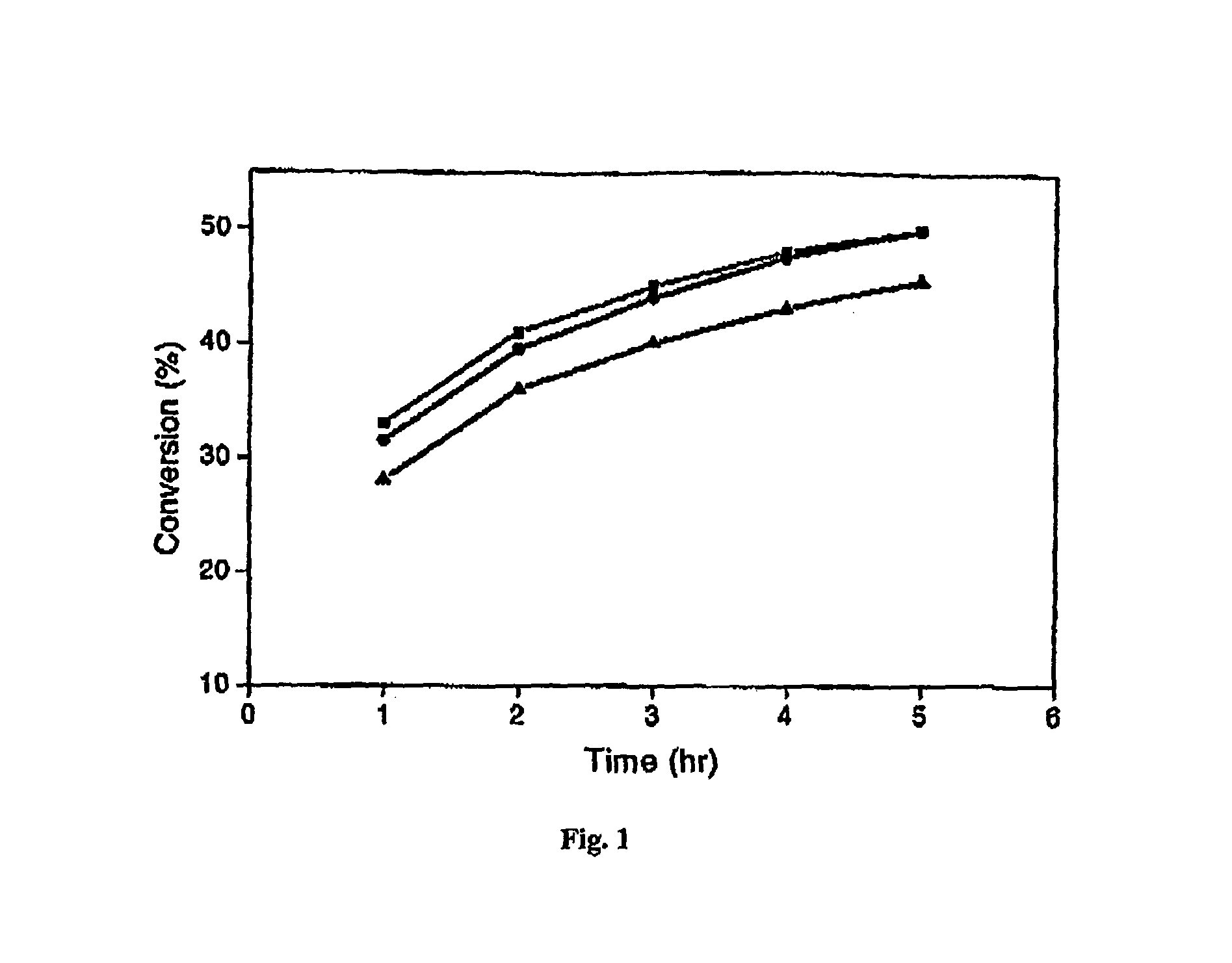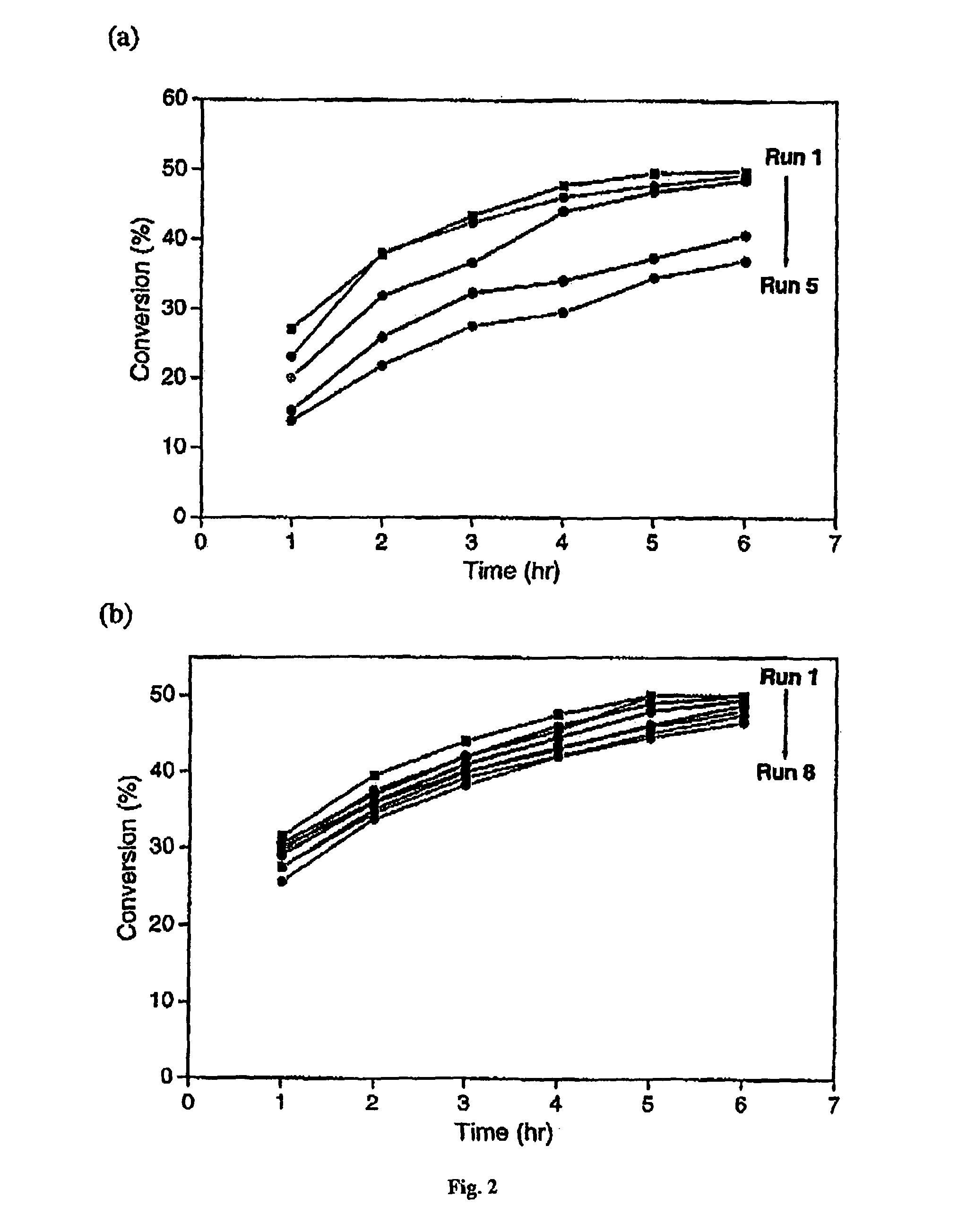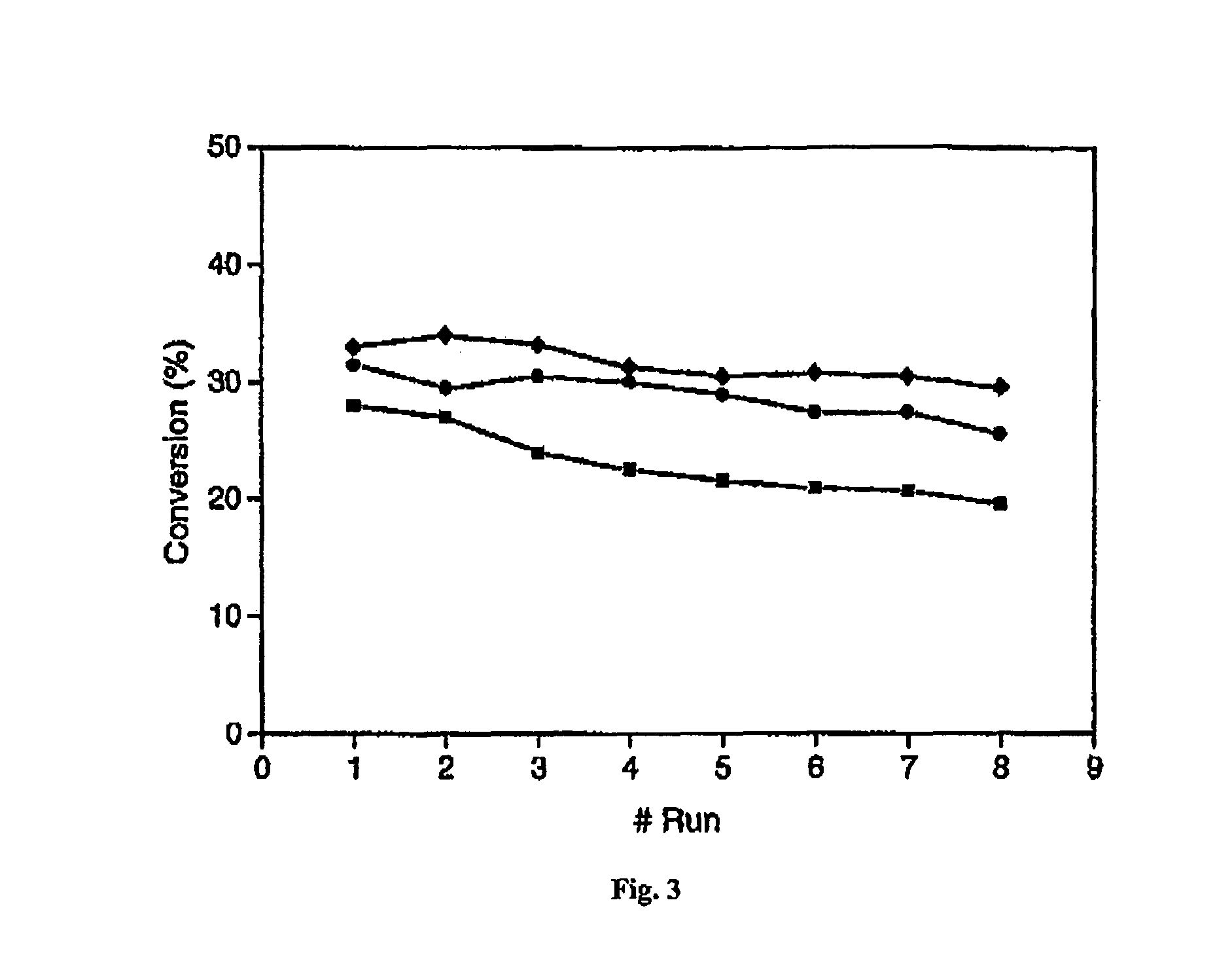Immobilised enzymes
a technology of immobilized enzymes and enzymes, applied in the field of immobilized enzymes, can solve the problems of high activity, difficulty in immobilizing enzymes onto hydrophobic porous silica, and relatively low enzyme loading, and achieve the effect of reducing the pressure within the housing
- Summary
- Abstract
- Description
- Claims
- Application Information
AI Technical Summary
Benefits of technology
Problems solved by technology
Method used
Image
Examples
Embodiment Construction
[0064]The present specification discloses a novel pressure-driven method to entrap or immobilise enzymes or other biological entities within the pores of a solid support (matrix), such as a mesoporous silica support modified with hydrophobic silanes. The leaching and thermal stability of the immobilized enzymes have been examined. The solid support may comprise cell-like mesopores connected by windows of a smaller size. A solid support having a suitable pore size may be used. The suitable pore size may depend on the size of biological material, so that the biological species fits into the cell-like mesopores of the solid support. In the case of MCF, the pore sizes (window pore size and cell pore size) may be readily controlled during its synthesis.
[0065]The process of the present invention comprises passing a biological species through a porous support, optionally recycling the species through the porous support, under high pressure. The high pressure may depend for example on the p...
PUM
| Property | Measurement | Unit |
|---|---|---|
| pressure | aaaaa | aaaaa |
| pressure | aaaaa | aaaaa |
| pressure | aaaaa | aaaaa |
Abstract
Description
Claims
Application Information
 Login to View More
Login to View More - R&D
- Intellectual Property
- Life Sciences
- Materials
- Tech Scout
- Unparalleled Data Quality
- Higher Quality Content
- 60% Fewer Hallucinations
Browse by: Latest US Patents, China's latest patents, Technical Efficacy Thesaurus, Application Domain, Technology Topic, Popular Technical Reports.
© 2025 PatSnap. All rights reserved.Legal|Privacy policy|Modern Slavery Act Transparency Statement|Sitemap|About US| Contact US: help@patsnap.com



